Our editors independently select these products. Making a purchase through our links may earn Well+Good a commission
The 7 Best Gravel Bikes for Every Type of Cyclist
Discover the best gravel bikes on the market, according to cycling experts, and learn how to choose the right one for you.
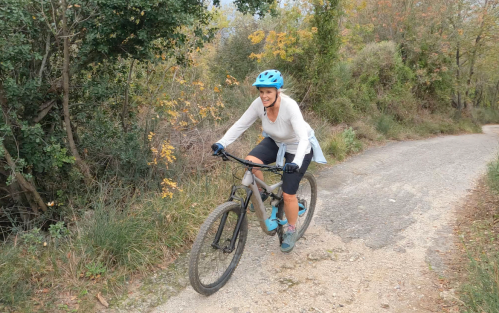
Gravel biking has become one of the most popular cycling activities in the past year, according to a January 2024 report from activity tracker app Strava.
Experts in This Article
tech writer for The Pro’s Closet, a Colorado-based certified bike reselling website
an elite triathlete, experienced gravel cyclist, and triathlon coach
an elite triathlete, gravel cyclist, endurance sports coach, and veteran bike fitter
an elite triathlete, gravel cyclist, and endurance sports coach
In this recent trend report, which includes data from uploaded activities from October 2022 through September 2023, Strava found gravel biking is the fastest growing sport among its users, with a 55 percent global increase and 48 percent U.S. increase in this off-road sport.
Gravel cycling involves riding on packed dirt or gravel roads, often with a gravel-specific bike. Unlike mountain biking, gravel biking rarely involves major rocks or tree roots. Sometimes, gravel cycling will require some riding on paved roads in order to get to your preferred off-road route.
While not required, a gravel-specific bike, colloquially known as a “gravel bike,” can make gravel riding safer and more fun. That’s because gravel bikes have thicker, knobbier tires to accommodate for the rough roads and may have sturdier, alloy frames to provide vibration resistance against the rocks and dirt you’ll ride over.
Want to give gravel cycling a try or just in the market for a bike upgrade? To take the guesswork out of your search, we spoke with elite cyclists, coaches, and bike sellers to help you narrow down which bike is best for you.
TIP
Because some manufacturers market bikes according to gender, we’ve listed both women’s and men’s picks below. The difference between most men’s and women’s bikes lies in the bike’s frame size. We encourage you to choose the bike that fits your proportions best, regardless of what the label says.
Our favorite gravel bikes at a glance:
- 1.Best overall: Trek Checkpoint series, $1,800+
- 2.Best for beginners: Cannondale Topstone 4, $1,325
- 3.Best budget: Polygon Tambora G4, $900
- 4.Best for racing: Specialized Diverge Expert Carbon, $5,000
- 5.Best for men: Giant Revolt line, $1,283+
- 6.Best for women: Juliana Quincy, $4,000
- 7.Best electric: Specialized Turbo Creo SL Expert EVO, $9,000
How we chose our top picks
Bikes come in a variety of styles and sizes with different components, like as handlebars and gears. It’s important to consider how much you want to spend on a new bike, how much you’ll ride the bike, and what your goals are in cycling before doling over potentially thousands of dollars on a new ride.
We spoke with four experts to get their takes on the seven best gravel bikes of 2024. They took brand recognition, quality, build, and price points into consideration when recommending the following bikes.
All four experts leveraged their collective decades of experience as cyclists and from interacting with the cycling community to recommend their picks.
Shop the best gravel bikes for every type of rider
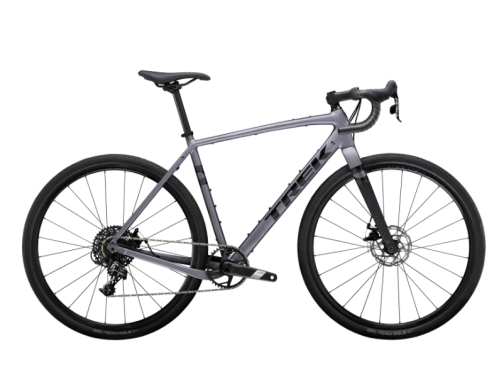
1. Best overall: Trek Checkpoint series — $1,800+
“The best gravel bike is the one that fits properly,” says Bruce Lin, a tech writer for The Pro’s Closet, a Colorado-based certified bike reselling website.
So, connecting with your local bike shop or bike fitter will help you determine what the best overall gravel bike is for your specific needs.
Although there are many models Lin considers among the best overall gravel bikes of 2024, he recommends the Trek Checkpoint series.
“I consider Trek Checkpoints to be benchmark gravel bikes,” Lin says. “The carbon version of the Checkpoint adds extra comfort at the rear with its IsoSpeed Decoupler, and there is also an affordable aluminum Checkpoint option, too.”
You can own a Checkpoint for as low as $1,800 with an aluminum frame, a SRAM Apex 11-speed single drivetrain, and mechanical disc brakes.
If you’re looking to spend a bit more, for $3,300 and up, you can have a fully carbon Checkpoint complete with internal storage (meaning inside of the frame), multiple gear and water bottle mounts and a 2x drivetrain (which means there are two chainrings in the front).
With 11 models of varying price, materials, and sizes in the Checkpoint family, Trek has truly built a gravel bike for everyone.
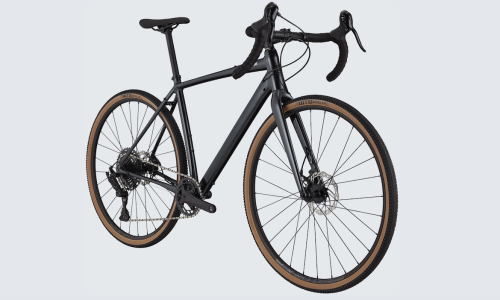
2. Best for beginners: Cannondale Topstone 4 — $1,325 — $1,325.00
Julie Dunkle, an elite triathlete, experienced gravel cyclist, and triathlon coach, recommends the Cannondale Topstone 4 as the best gravel bike for beginners.
This bike is a “solid alloy gravel bike with a full carbon fork, a 1x drivetrain, and ample gear mounting points,” she says.
At $1,325 the Topstone 4 isn’t an intimidating gravel bike from a budget or style standpoint. An alloy frame means the bike is made by combining two different metals together—usually aluminum and another element—to create a sturdy, durable frame.
The Topstone 4 also has a 1x drivetrain, which means there’s only one front chainring. This means riders who are new to gravel biking won’t have to worry about transitioning between front chainrings—only shifting between easier and harder gears located on the rear wheel of the bike.
This bike also has the ability to mount front and rear fenders for wet or muddy rides, and it has plenty of spots to mount a water bottle holder.
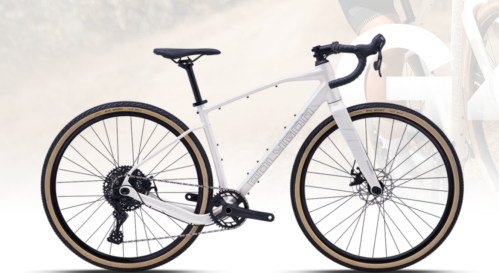
3. Best budget: Polygon Tambora G4 — $900 — $900.00
For under $1,000, the Polygon Tambora G4 gives riders an alloy frame and carbon front fork, without any complicated configurations, Dunkle says.
The front fork even offers two configurations for the thru axle—a gravel-specific slot-in for the axle, and a road-specific slot-in for the days you’d rather stick to the pavement. The two slot-ins change the angle of the front setup ever-so-slightly to accommodate for upright, stable gravel needs and a more angled road position.
The Tambora G4 also features tire clearance up to 45c tires, meaning you can put some large, stable tires on the bike if desired. A 40-tooth chainring accommodates even the most diverse riding needs and a 1x drivetrain makes this bike uncomplicated for new riders or those who simply don’t want the fuss of more than one chainring.
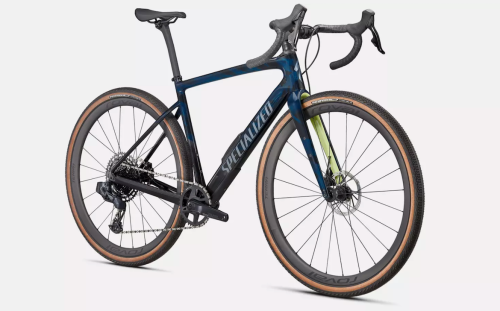
4. Best for racing: Specialized Diverge Expert Carbon — $5,000 — $5,000.00
If you plan on racing —and being competitive—in gravel cycling, it’s likely you’ll want to invest in a carbon gravel bike.
Carbon frames tend to be lighter and more nimble than frames made of alloy or steel, allowing a rider to carry less weight from their bike as they traverse already difficult terrain.
The Specialized Diverge series ranges from $1,300 all the way up to $12,500, but the Diverge Expert Carbon ($5,000) is a great starter racing bike that won’t set you back as far as other racing bikes budget-wise.
The Expert Carbon is a fully-carbon bike complete with internal cable routing and disc brakes for accurate stop time and distance. The bike also contains a front fork suspension to handle rougher terrain.
This bike also comes with nicer wheels than a cheaper, non-racing gravel bike: Roval 32mm depth carbon wheels and 42c tires, both of which are ideal for covering off-road terrain while maximizing weight and aerodynamics.
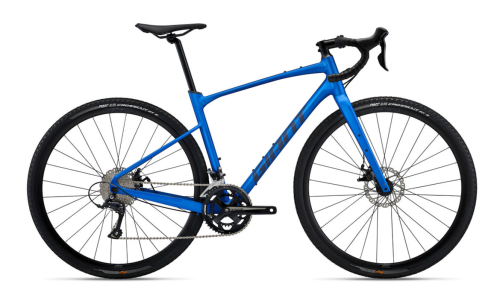
5. Best for men: Giant Revolt line — $1,283+
Lin notes there likely “isn’t a great answer to the question of the best gravel bike for men” because the best bike is “the one that fits properly.” In fact, many bike manufacturers are moving away from the traditional model of having men- or women-specific models and are trending toward offering more expansive sizing to accommodate a variety of body measurements, he says.
That being said, the Giant Revolt line offers frames that are meant to accommodate riders as tall as 6’7″ and 330 pounds, which can work well for those who are taller and naturally have more weight to their body.
The Revolt line spans affordable alloy frames all the way to elite carbon composite frames and features disc brakes on all its models as well as carbon front forks on all its models.
“Even a properly sized bike might not fit just right out of the box,” Lin says. You should chat with a local bike shop or bike fitter to determine if you need a longer stem, wider handlebars, or a different saddle to accommodate your specific measurements and to find a comfortable setup for your body size and riding needs.
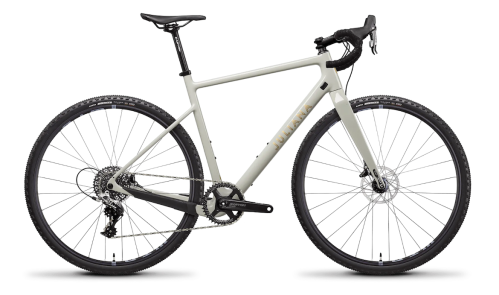
6. Best for women: Juliana Quincy — $4,000 — $4,000.00
While it can be comforting to see women-specific bikes—and to support female-owned bike brands—it’s generally not necessary for a woman to seek out a female-specific bike, according to Marni and Karel Sumbal, elite triathletes, gravel cyclists, and endurance sports coaches.
Instead, the Sumbals recommend finding a bike that will fit your unique measurements. Marni notes that because she’s 5’0″, she often feels limited in her bike choices. She shares how important it is for her— and for others who may be shorter and smaller in stature—to fully understand her measurements and how they will apply, or not, to whatever gravel bike she’s looking at.
Working with an experienced bike fitter can help any cyclist understand key measurements that’ll make selecting a bike easier.
Marni recommends the Juliana Quincy, which she currently rides, because it comes in both 700- and 650-sized wheels and can be configured from a 1x drivetrain to a 2x drivetrain, if desired.
The Juliana Quincy also has a more sloped top tube (the tube between the seat and the handlebars), which can make it easier for people who may be shorter to get on and off the bike.
Marni says that overall, the bike is stable and responsive for her size and needs on the bike. She also notes that due to a person’s unique measurements, any bike may require a bit of finessing after purchasing, such as new handlebars for smaller shoulder widths or shorter crank arms for shorter legs. All of this should be considered when looking at any gravel bike, female-specific or otherwise.

7. Best electric: Specialized Turbo Creo SL Expert EVO — $9,000 — $9,000.00
Lin notes he’s a major fan of the Specialized Turbo Creo SL Expert EVO gravel bike.
“The Turbo Creo is sleek and lightweight, and the low torque motor feels very natural to ride,” Lin says. “[The bike] blends in well with ‘regular’ bikes, too.”
Lin notes that the Turbo Creo might not be right for everyone, though—and that other gravel bikes, like the Cannondale Topstone Neo, provide even more assistance with a more powerful motor.
The Turbo Creo SL EVO weighs in at just over 28 pounds, which is shocking for an e-bike—most clock in well over 35 pounds. The bike’s battery has a range of about 80 miles when fully charged (and has the option to purchase an aftermarket 40-mile range extender) and assists up to 240 watts.
This bike is pricey, but if you’re looking for a gravel e-bike that will fool even your most gravel-educated friends into thinking it’s analog, this award-winning bike is the move.
ThirdLove Just Launched Bras That Help Balance Your Body Temperature—Here’s Why That’s a Game-Changer for Women in All Life Stages

These Are the Only Types of Underwear You Should Be Wearing, According to Gynecologists

These Are the Summer Essentials You Should Bring With You Every Time You Leave the House, According to a Derm and an RD

Tips for buying a gravel bike
Buying a new gravel bike is a big purchase, so it’s important to chat with an expert beforehand. A local bike shop or bike fitter can be great resources to discuss what size bike you need or if you need to upgrade components such as the gearing or cranks (what the pedals connect to) after buying your bike.
Before going all-in on your new gravel bike, it’s important to step back and consider a few factors:
- 1.How much are you willing to spend on a new bike? Knowing your budget range will help narrow your search and keep you from overspending.
- 2.What style of bike do you like? Some people prefer flat handlebars and a more upright position, while others want curved handlebars and a more aerodynamic way to sit on the bike.
- 3.How much will you ride the bike? Understanding if you plan on riding this bike every day of the week or once in a blue moon will also help to narrow your search for a gravel bike.
- 4.What are your athletic goals? If you want to work toward your first gravel race, you may want to invest in a slightly more aerodynamic and lighter gravel bike. If you want to join in on a no-drop group ride once a week, you may not need to shell out as much dough for a new gravel bike.
FAQ
1. How does a gravel bike differ from a road or mountain bike?
Lin sums up the differences as “tires, geometry, gearing and intended use—gravel bikes sit in between road and mountain bikes for all of these features.”
Gravel bike tires are usually in the 38 to 50mm width range, which is wider than road tires but still not as wide as mountain bike tires. This width range makes gravel tires more nimble than mountain bikes on packed dirt or gravel terrain, but stabler than road bikes would be off road, Lin explains.
Lin goes on to say that gravel geometry is generally more upright and stable than road bike geometry, but not quite as upright and wide as mountain bikes. Gravel bikes may not feel as aerodynamic or “sporty” when ridden on paved roads, but their upright position will benefit riders on more rugged terrain where stability is key.
Gravel gearing is often “easier” than road gearing, Lin says. Gravel bikes have lower gears that make it easier to keep the pedals turning when biking up steep or rocky terrain. The trade-off, Lin says, is that gravel bikes tend to lack the higher gears road bikes have for hitting higher speeds on paved roads.
Lin describes gravel bikes as the best “happy medium” between road and mountain bikes. Gravel bikes can be used on pavement and on some “tamer” mountain bike single-track trails.
2. Are gravel bikes good for long-distance riding?
Gravel bikes are probably the best bike for long-distance riding, Lin says.
“Gravel bikes have the perfect balance of comfortable geometry, compliance, and versatility to handle epic adventures,” Lin says. “Most are designed to conquer the world’s biggest gravel races, where riders cover well over 100 miles or sometimes over 200 miles in a single day.”
Gravel bikes’ upright geometry and ability to handle gritty off-road paths make them ideal for crafting an all-day adventure by bike.
3. What is the best frame material for a gravel bike?
Thanks to advances in bike material technology, there isn’t one particular material that reigns supreme, Lin explains.
“The ‘best’ frame material really depends on each athlete’s individual needs and goals,” Lin says. “Aluminum, steel, alloy, and carbon all work great—but there are some generalizations we can make to help athletes choose the best bike for them.”
Lin explains the following:
- Aluminum frames tend to be the most affordable. They’re also stiff, durable, and not as heavy as many people think.
- Steel bikes tend to be the heaviest, but they’re often the most durable and comfortable frames. Titanium is similar to steel but lighter and more expensive.
- Carbon frames are usually the lightest option, and they’re what you’ll usually see being used by pros and competitive racers.
Aluminum or steel frames are a great investment for those looking to purchase a gravel bike that will be durable, reliable, and will last for many years, if not decades. A carbon-framed bike is a strong purchase for someone looking to compete in gravel races or level up their game in gravel bike racing.
Sign up for the Well+Good SHOP Newsletter
Get exclusive deals on wellness, beauty, fitness, and food products that have been hand-picked by our editors.
Got it, you've been added to our email list.







